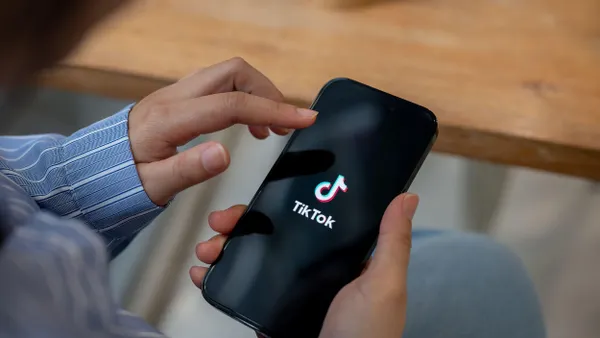Instagram has held a steady position in the leading lineup of social platforms – it has 1.5 billion monthly users, it’s the most popular app for Gen Z and Millennials, and it beat out TikTok for the most-downloaded app in Q4 2021.
While the platform’s popularity has remained a constant, the content and features available on Instagram have seen major changes over recent years. What started out as a photography app for sharing images with friends has turned into a direct shopping channel with tremendous potential for brands and retailers to engage with consumers and drive sales.
Part of Instagram’s redirect to focus on shopability comes from the increasing demand for social commerce. According to recent Forrester research, social selling is the top priority for business decision-makers when it comes to commerce opportunities (63%). And the same is true for consumers – of all Instagram users, 70% open the app to shop.
So what are these new capabilities that give it a commerce edge?
Instagram’s social commerce trio
- Organic content: Unlike most other commerce channels, Instagram provides businesses with the opportunity to generate unpaid marketing content. This ability to reach and engage with consumers authentically – and in a place where they’re already spending time – is a powerful branding tool.
Businesses can approach organic content from three different angles: 1) posting their own content to their business profile, 2) posting user-generated content to their business profile, and 3) partnering with influencers to promote products or services on their own profiles.
If executed correctly, organic content is one of the easiest ways to establish trust with consumers and build long-term relationships.
- Ads: To further increase brand awareness and attract more followers, paid advertising is also an important component of every Instagram marketing strategy. But a lot of companies overlook the variety of ad formats Instagram offers.
They start out as simple as Basic ads, which feature a photo or video, and can get as complex as Collection ads, which feature a cover image or video followed by three product images that direct to a full-screen landing page. There are unique ads for Reels and Stories. There are Carousal ads used to showcase up to 10 images or videos. And then there are Branded Content ads that allow businesses to leverage paid partnerships.
Brands and retailers can play around with these different ad options, but similar to organic content, paid advertising on Instagram needs to blend in with other content on users’ feeds.
- Instagram Shops: Currently undergoing testing in the US market, Instagram Shops is possibly where the platform’s greatest commerce potential lies. It acts as a storefront where users can browse products in curated collections, view product detail pages to learn more information like sizing, color variations, and availability, and make purchases directly within the app. To drive traffic to their Insta Shop, brands and retailers can set up shopping tags on products in their Instagram ads that take users directly to their storefront.
Today’s consumers want seamless experiences, so allowing people to carry out the entire shopping journey without ever having to leave the app, is what makes Instagram an ideal commerce channel. Productsup’s Commerce shortfall report shows that more than one-third (36%) of consumers would be enticed to make a purchase if they could do so directly from pictures on social media, such as buying a top worn by an influencer in an Instagram post.
But considering Instagram has received recent backlash for overcrowding feeds with sponsored content and advertisements, companies need to ensure they’re using the right tactics to generate positive outcomes.
Four steps for driving sales on Instagram
Social commerce on Instagram is only as powerful as the strategy behind it. Using the following best practices, companies can increase the ROI on ad spend, improve consumer engagement, and drive more sales on the platform.
- Experiment with different products: With a wide range of ad formats and content styles, brands and retailers should try out different products in front of a variety of target audiences. What works well for some demographics may vary for others. The only way to take full advantage of the platform is to push creative boundaries.
- Automate, automate, automate: Trying to manage product feeds for Instagram in addition to the hundreds of other commerce channels available is unrealistic for businesses using manual processes. Today’s technology automates feed management, content creation, and product content syndication to allow companies to maintain a consistent, up-to-date, and tailored shopping experience.
- Leverage paid with organic content: Using paid advertising to compliment organic content will help businesses maximize their brand’s potential on Instagram. Keep in mind, the objective of organic content should be for building the brand identity, whereas paid advertising should be used for performance marketing.
- Instagram analytics: Experimentation on Instagram is only effective when tactics are evaluated for success. Companies need to take advantage of Instagram’s analytics capabilities to gather as many metrics as possible, comparing engagement across posts and ads.
What’s next for social commerce on Instagram?
From live shopping events and physical pop-up stores to AR filters and digital collectibles for the metaverse, there’s still much more to come for enhanced shopping capabilities on Instagram.
To learn more about the next five big things on Insta and dive deeper into the best practices for selling on the platform, download Productsup’s Social commerce on Instagram guide.










